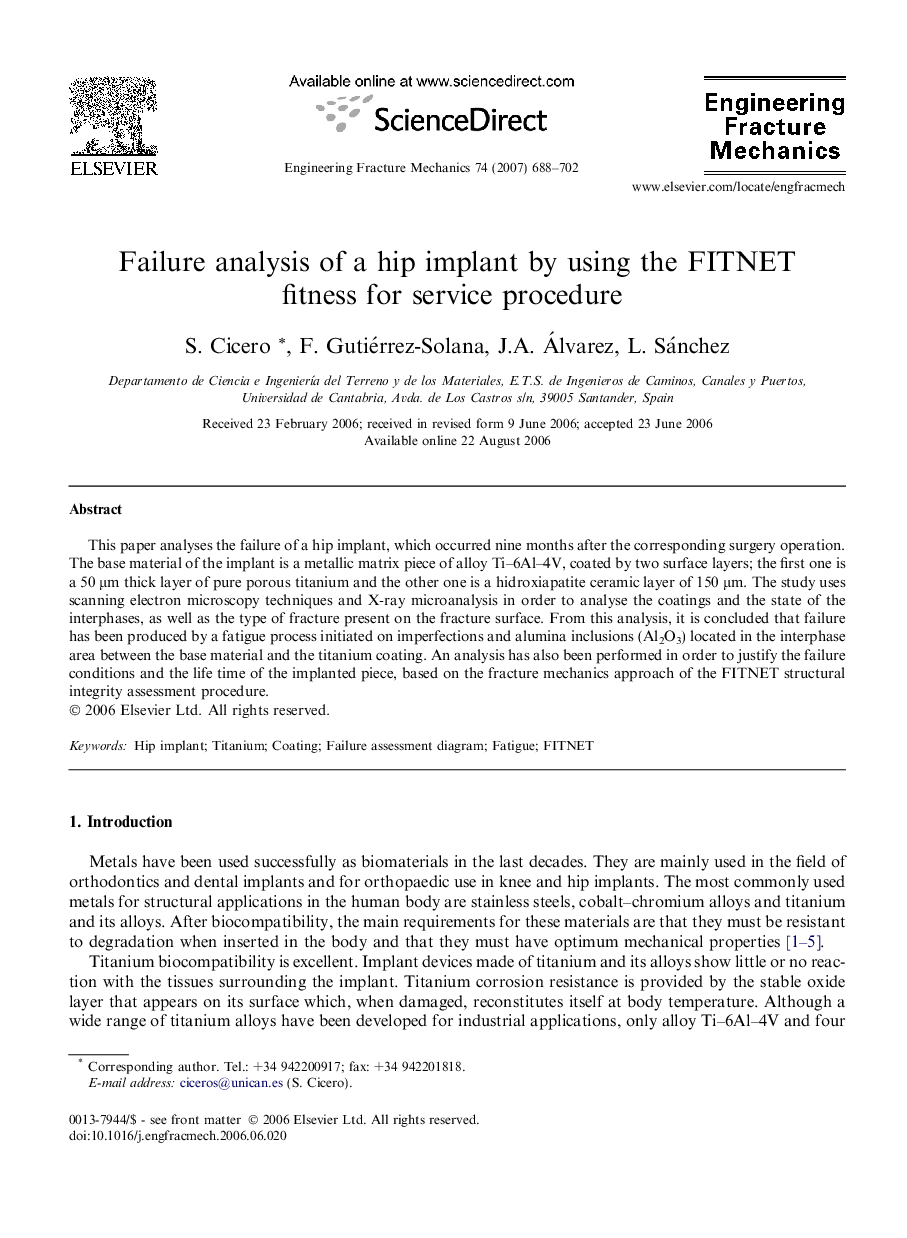| Article ID | Journal | Published Year | Pages | File Type |
|---|---|---|---|---|
| 775814 | Engineering Fracture Mechanics | 2007 | 15 Pages |
This paper analyses the failure of a hip implant, which occurred nine months after the corresponding surgery operation. The base material of the implant is a metallic matrix piece of alloy Ti–6Al–4V, coated by two surface layers; the first one is a 50 μm thick layer of pure porous titanium and the other one is a hidroxiapatite ceramic layer of 150 μm. The study uses scanning electron microscopy techniques and X-ray microanalysis in order to analyse the coatings and the state of the interphases, as well as the type of fracture present on the fracture surface. From this analysis, it is concluded that failure has been produced by a fatigue process initiated on imperfections and alumina inclusions (Al2O3) located in the interphase area between the base material and the titanium coating. An analysis has also been performed in order to justify the failure conditions and the life time of the implanted piece, based on the fracture mechanics approach of the FITNET structural integrity assessment procedure.
